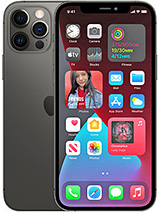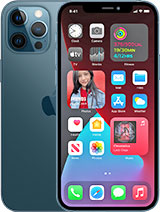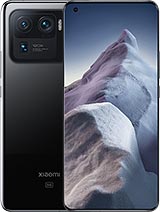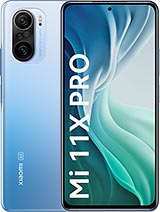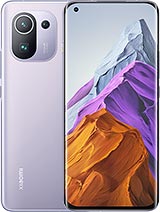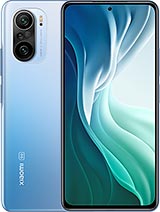Xiaomi Mi 11 vs iPhone 12 Pro Max Speed Test By TechNick
This is what we have all been waiting for. The snapdragon 88 and Xiaomi is the first smartphone company to showcase it in their recently released flagship. The Xiaomi mi 11. Today I'll be giving you a taste of its performance against the almighty iPhone 12 Pro max. The iPhone is rocking apple's latest a14 bionic chipsets run on five nanometer technology. This is the same process: node technology driven by the snapdragon 888 chips, the Xiaomi mi 11, has eight gigs of lpddr5 ram and UFS 3.1 storage. While the iPhone is packed with six gigs of RP ddr4 x, ram and NVMe storage, the Xiaomi is running mini 12 skin over android 11 and the iPhone is kit with iOS 14.3. The mi 11 is the first Xiaomi device to have a who plus panel, which we're going to enable here as well as 120 hertz.
The iPhone is stuck at 60 hertz. We have also made sure to not optimize any of the apps in terms of battery on the Xiaomi, and we have left all animation skills enabled only Xiaomi to match that of the iPhone round. One will be all about boot, fingerprint and face unlock run. Two will be about initial opening. App speed and r3 will be about ram management using our fingers over here.
So we're going to pop GoPro footage at the bottom left-hand corner for accuracy. I'm really excited to see who comes out on top in this five nanometer processed node technology, race between the Xiaomi, mi, 11 and iPhone 12 Pro max. This is tech neck and without further ado. Let's go we're gonna start here in round one with a simple boot to see which one can power on its phone first, and it is indeed the iPhone 12 Pro max was 17 seconds six seconds slower on the mi 11 with 23 seconds there getting its first points on the iPhone 12 Pro max second points. After going into the app icons on the home screen quick over there, the mini 11 has a secure fingerprint ID sensor and the iPhone has a fingerprint 3d facial unlock system and the Xiaomi was faster, every single time they're.
Getting at its first point in round one testing out the 2d unsecure facial recognition sensor within the selfie cam on the Xiaomi, as opposed to the 3d facial recognition system on the iPhone. The Xiaomi was quick every single time there getting its second and final point in round one matching, both devices with two points in round one. We made sure that both phones are hooked up to the same Wi-Fi network max brightness, and all apps closed. In the background before we head over to round two and the first system app in round two was too close. To course, so no point was allocated going into the calculator app over here once again, too close to course, so no point was allocated once more zero points, app so far in round two, the next and third system, app that we're jumping into here is the camera app going into that one.
The iPhone 12 Pro max opened it up slightly quicker flipping to the selfie cam. The 11, actually flipped, quick over there getting its first point. The iPhone 12 Pro max took the snap slightly faster, but the Xiaomi saved it to gallery quicker. So no point was dedicated there going into the photos app on each phone. It was too close to call jumping into the actual photo.
The Xiaomi actually opened up the photo quicker, but the iPhone loaded, the page quicker. So no point was allocated over there going into adobe photoshop express. It was clear that the iPhone 12 Pro max snagged that second point over there and going into the actual photo this time the iPhone actually opened it up quicker, but the Xiaomi loaded, the page quicker. So no point was allocated there. Saving both of these photos to gallery that we took with the selfie cams earlier.
The Xiaomi actually got that point because it says save to gallery at the bottom of the screen before it said: save to camera roll at the top of the iPhone screen. So two points a piece so far in round two going into Adobe Premiere rush, a video editing software app, the Xiaomi mi 11 opens it up quick again. It's third points pulling ahead of the iPhone 12 Pro max now with double the points on four points, as opposed to two on the 12 pro max when going into the project slightly quicker than that of the iPhone, and it is really taking a hell of a long time guys stick around with me for now, because we're getting into some fascinating benchmarks later with geek bench and 3dmark. The results are fascinating. So stick around for that one.
But as of right now, we're going to render this 4k 25 frames per second clip, and we're going to compress it down to 1080p and match the frame rate of 25 frames per second we're going to hit export over here, I'm not going to speed things up bottom right hand, corner I'll speed it up when we get to the Xiaomi just to show you how darn fast the iPhone is just four seconds with that wonderful NVMe storage, as opposed to the UFS 3.1 storage on the Xiaomi, which did it in 13 seconds, almost 10 seconds slower than the iPhone over here. Even though it's a newer device on a wonderful snapdragon, 888, chipset, UFS 3.1, still seems to render things slower when it comes to Spotify things were too close to school over there no point was allocated going into astral VPN. It was clear that the iPhone 12 Pro max picked up that point now matching the Xiaomi with four points, a piece turning it on the Xiaomi actually turn it on the same time as the iPhone since the iPhone had a loading icon at the center of the screen, which disappeared when the Xiaomi enabled it and going to Google Chrome the iPhone 12 Pro max picks up its fifth point. I will be jumping into some social media apps, starting with Facebook, going into that one. The iPhone 12 Pro max picks up its sixth point over here now two points ahead of the Xiaomi mi 11.
It's very strange. It keeps bouncing between the two. I guess the snapdragon 888 doesn't look so good at the current point in time. But let's see what happens with the rest of the apps, which starts to get harder and harder as the test progresses stick around with us for now. Seven points on the iPhone 12 Pro max after opening up Instagram quicker and going into Twitter, our final social media app jumping into that one.
The Xiaomi mi 11 open that one up quicker five points for the Xiaomi, as opposed to seven on the iPhone 12 Pro max going into YouTube our first video streaming app jumping into that one. The 11 now is just one point behind the iPhone 12 Pro max with six points, as opposed to seven opening up that one faster and going into my channel, which one can open it up quicker. It is indeed the iPhone 12 Pro max with 8.9 2.8 once more over the Xiaomi going into one of my videos, the iPhone opened it up quicker, started playing it quicker and loaded. The whole page quicker picking up its nine point now, with the three lead gap over the Xiaomi mi 11. , going into Netflix our second video streaming, app more full movies and series seven points for the mi 11 after opening it up quicker, but going into my profile.
It was too close to follow this. So no point was allocated just a two point gap between the two once more going into our first benchmark here, which is geek bench 5.2.5. The m11 actually opens up the app quicker just one point behind that of the iPhone 12. Now we're going to go ahead and run this benchmark. I've sped it up by 3600 to the bottom right-hand corner the iPhone 12 Pro max finishes in a minute and 58 seconds, as opposed to two minutes and 36 seconds on the Xiaomi, and the iPhone was a hell of a lot better in terms of score when it comes to single core scores, as well as multi-core scores, quite impressive for the iPhone's a14 bionic chip there, as opposed to Qualcomm's latest five nanometer processed node tech, the snapdragon 888, going into 3d mark on benchmark.
The iPhone 12 Pro max opens this one up faster this time around and going into it. Speeding through bottom right-hand corner at 1600 percent. The iPhone 12 Pro max picks up its 12 point with one minute and 9.5 seconds, as opposed to one minute and 26.5 seconds on the Xiaomi. Xiaomi got just over 5000 points and the iPhone got just over 8 000 points with the iPhone getting the lead of 48 fps, as opposed to 32.8 frames per second on the Xiaomi, once again, very impressive for apple's a14 bionic chip going into our first game of four here, subway surfers, which one can open this up quicker. It does take quite a while to load this game and which one is it going to be, it's so close neck and neck here, but it is the iPhone 12 Pro max now, picking up its 13th point with a five point lead over the Xiaomi mi 11.
I would honestly have never expected this, but just one thing to mention guys: look at those colors on the Xiaomi. They are just popping. They look absolutely fantastic going into our second game here, temple run 2. I sped it up a bit, slowed it back down and it was so close there. It's actually the first time.
That's ever happened with temple run 2 where no point was allocated because it was so neck and neck going into our second last game among us. I'm sure all of you guys have come to know and love this game. I personally loved it in 2020 nine points for the mi 11, opening that one up quicker than the iPhone 12 Pro max, not just four points behind the iPhone, so in other words, there is no way of the Xiaomi pulling ahead of the iPhone since there's just one app one game left of the 20 here, PUBG mobile, which the iPhone does it in 11 seconds, as opposed to 17.5 seconds on the Xiaomi mi 11. , just bear in mind that the Xiaomi is half the price of the iPhone. That's something to think about going into our ram management, part of the test, which is round three so far so good for Xiaomi.
It didn't keep the camera flipped over there, but that is just a setting. It did indeed keep the app open first after the iPhone kept open, which the Xiaomi killed was photoshopped. Express second, was rush. The third was Spotify. They both kept astral open going into Google Chrome once again, Xiaomi killed this one going into Facebook, Xiaomi killed it no surprise over there, Instagram Xiaomi killed it once again.
Twitter killed it. Once again. We have eight gigs of ram on the Xiaomi, with lpddr5 modules, as opposed to lbddr4x on the iPhone and six gigs of ram, but the iPhone is doing better in terms of optimizations when it comes to ram management. They are known for this, and Xiaomi is known for really poor ram management, and that doesn't seem to have changed this time round, even though we have set all of these 20 apps to not use battery optimization when keeping them open. In the background, I guess Xiaomi didn't really listen to us last time.
After all, so nine points before the iPhone after ending round three, as opposed to zero on the Xiaomi mi 11, since it kept nine apps open with the Xiaomi kill them total score.11 points for the Xiaomi mi 11, as opposed to 25 for the iPhone 12 Pro max, can't really say: I'm surprised since iPhone's optimizations are absolutely fantastic when it comes to raw speed, raw performance. We're focusing on around two over here nine points for the Xiaomi mi 11, as opposed to 14 for the iPhone 12 Pro max. The gap between the speed is not as much as the gap between the ram management. I guess we're going to have to wait for that. Xiaomi, mi, 11 pro or maybe snapdragon's newer chipset next year.
Hopefully you guys enjoyed watching this video as much as I did. Making it a sub of the channel would be fantastic. This is technic, and I'll, see you in the next one.
Source : TechNick

